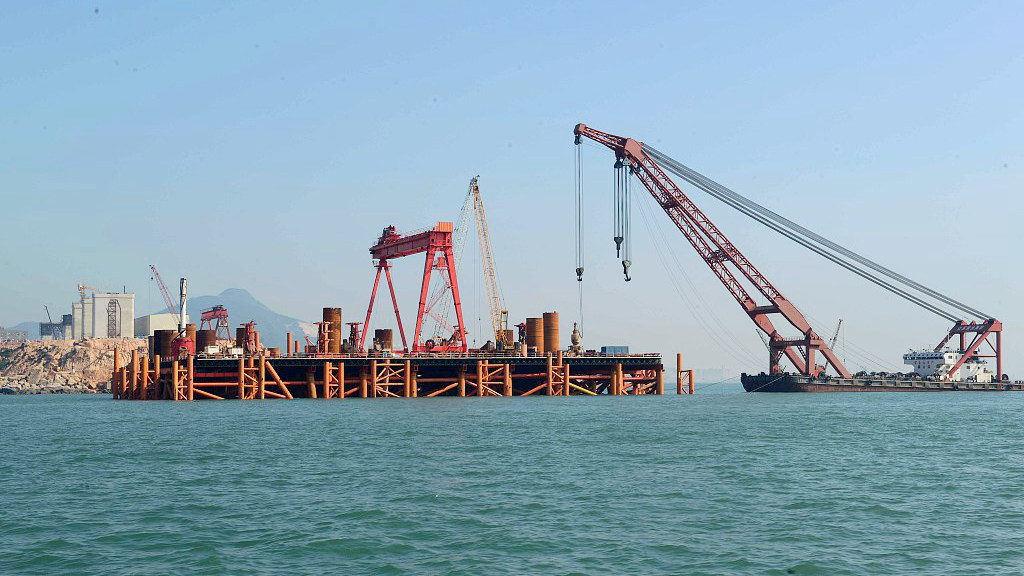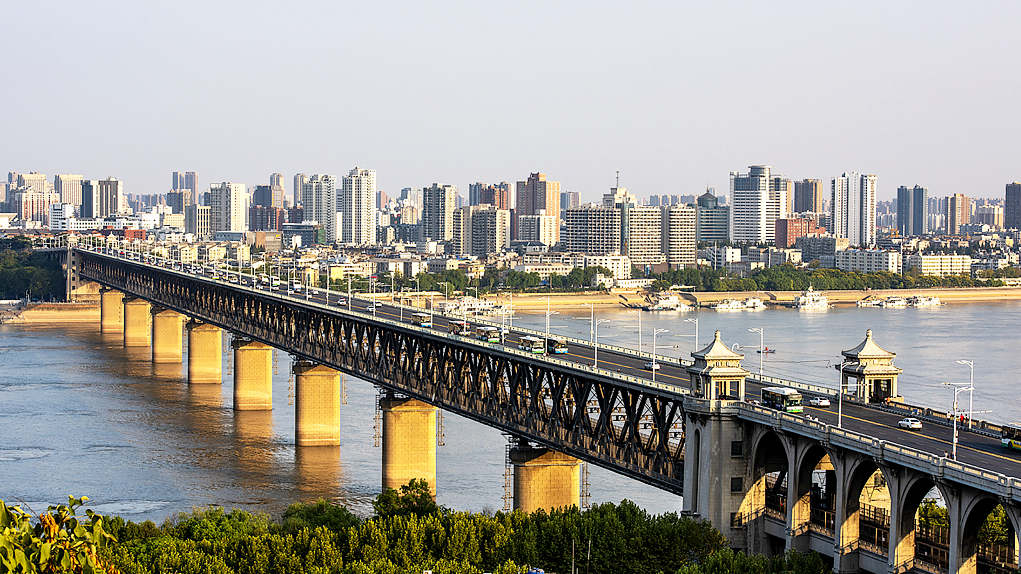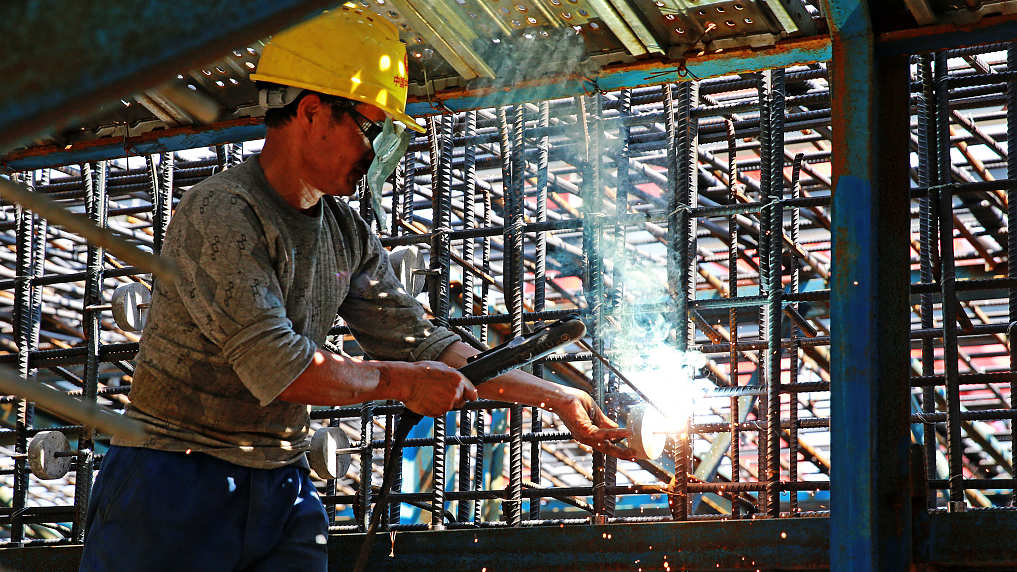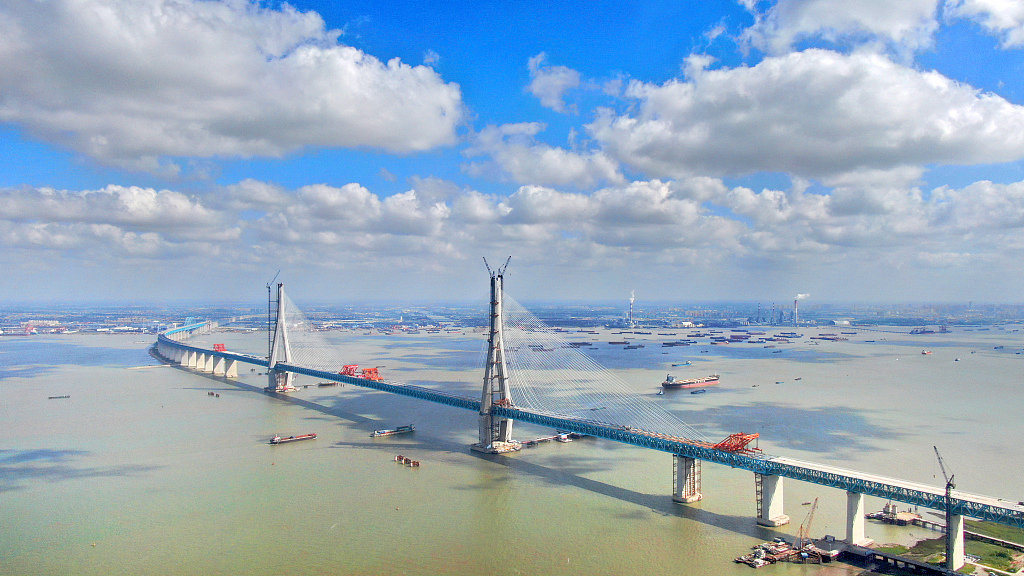08:52

Bridges are a critical component of a country's infrastructure portfolio. They cut transportation times, slash trade costs and boost local economies. And in the early years of the People's Republic of China, China Railway Major Bridge Engineering Group (MBEC), a subsidiary of China Railway Construction Group, helped drive the young nation's development and industrialization.
In southeastern China's Fujian Province, MBEC built the country's first cross-strait dual-use bridge – the Pingtan Bridge. The massive, 16.34-kilometer-long bridge links China's fifth-largest island – Pingtan Island – with the Chinese mainland.
This bridge is one of the most technically challenging bridges ever to be constructed in China and the world. It used 850,000 tons of steel, which is enough to build over 120 Eiffel Towers.
The technical breakthroughs on this bridge have set a new global standard when it comes to connecting landmasses over water.

The Pingtan Bridge construction in 2015. /VCG Photo
The Pingtan Bridge construction in 2015. /VCG Photo
This is also the first time that a cross-strait bridge has been built in a typhoon area. Gale-level winds roar over these waters nearly a third of the year, and "strong" winds blast the area over 300 days out of the year.
"Geological conditions on the seabed are particularly complex… As forceful waves lash against the rocks, the seabed has become smooth-slate rock, the strength of which is harder than iron," said Liu Ziming, the chairman of MBEC.
China's advances in bridge building didn't come easily. In the early years, the government started with a nearly blank slate when it came to bridge construction.
It began with the Wuhan-Yangtze River Bridge, built by MBEC – then known as the Wuhan Great Bridge Engineering Bureau – from 1955 to 1957. This was the first time in China's millennia of history that a bridge was established across the country's longest river, better linking its northern and southern regions.

The Wuhan Yangtze River Bridge /VCG Photo
The Wuhan Yangtze River Bridge /VCG Photo
Building the Wuhan-Yangtze River Bridge presented many challenges. For example, a lack of experience in bridge construction, shortage of necessary equipment and materials, and the relatively small number of skilled workers and engineers. But when the going gets tough, the tough gets going, and a renewed and confident China was ready to show its can-do attitude.
"Facing difficulties does not mean we will give up constructing the bridge," Liu Ziming told CGTN. "Our first-generation of bridge builders had an intense passion and spirit of serving their country… of taking on responsibilities for the country. They were determined to build this bridge, overcoming all obstacles in doing so and using only two years to finish the project by October of 1957."
There aren't many workers and engineers from the first generation left to tell the story of China's early bridge building experiences. Eighty-seven-year-old Liu Changyuan – then deputy chief engineer of the project – is one of them.
"We had a three-shift rotation in building the Wuhan-Yangtze river bridge. Since the bridge piers were all in the water, we had to take a boat to our construction site. Despite the hard work, we were happy and proud of what we were accomplishing," Liu Changyuan said.
For 80-year-old Du Shouhua, part of the first class of students at China's first bridge college established by MBEC, it was a fiery speech by MBEC's first bureau chief that inspired and left an indelible impression on him throughout his career.
"Our first bureau chief, Peng Min, held our opening ceremony in a cafeteria. I've forgotten almost all his speech now, but I will never forget when he told us, 'You have to study hard… learn more… build more bridges… build good bridges… and contribute to mankind.' This has become a lifelong goal for all of us," Du said.

MBEC's workers at the construction site in Zhoushan city, Zhejiang Province, China, 2019. /VCG Photo
MBEC's workers at the construction site in Zhoushan city, Zhejiang Province, China, 2019. /VCG Photo
That can-do spirit has carried through generation after generation at MBEC.
Initial working conditions to build the Pingtan Bridge were tough. Living supplies had to be shipped to the islands, often disrupted by bad weather. Taking a shower was a luxury, power outages from typhoons took getting used to, and days when instant noodles made up all three meals were common.
"Working here, I often cannot spend holidays with my family. But everyone here has chosen to sacrifice family-time to contribute to our country," said Yang Dangguo, manager of Pingtan cross-strait highway-railway bridge at MBEC.
For Yang and his colleagues, those sacrifices were eventually worth it. On September 25, 2019, the final section of the Pingtan Bridge was put in its place after six years, with no safety accidents, a focus on quality and the linking of four islands. The travel time for Pingtan residents to reach Fujian's provincial capital of Fuzhou shrunk by 70 percent.
Going forward, MBEC hopes to contribute its bridge-building expertise to help other developing nations, one of them being the Padma Bridge project in Bangladesh, which is part of the Belt and Road Initiative.
This is Bangladesh's largest infrastructure project to date. A bridge across the Padma River – one of Bangladesh's three major rivers – not only ensures safety but also cuts the travel time between the capital Dhaka with the country's third-largest city Khulna from 13 to just around three hours.

An aerial view of the Hutong (Shanghai-Nantong) Yangtze River Bridge that is being built by MBEC, 2019. /VCG Photo
An aerial view of the Hutong (Shanghai-Nantong) Yangtze River Bridge that is being built by MBEC, 2019. /VCG Photo
Starting from the difficulties of building the first bridge across the Yangtze River to now a recognized global leader in bridge construction, MBEC has played a key role in China's industrialization process, constructing some 3,000 bridges since its founding in 1953.
The geographical diversity and challenges of China's varied landscape has provided MBEC with unparalleled opportunities in enhancing its bridge-building expertise. MBEC was not only a witness to seven decades of the People's Republic of China, but it also built and connected it one bridge at a time.